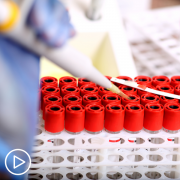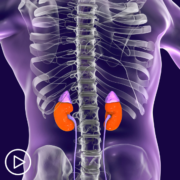What Should You Ask Your Doctor About Myeloma Testing?
What Should You Ask Your Doctor About Myeloma Testing? from Patient Empowerment Network on Vimeo.
Testing and test results may affect your myeloma care and treatment. Dr. Nina Shah, a myeloma expert, shares key questions to ask your doctor about testing and reviews testing techniques for myeloma.
Dr. Nina Shah is Associate Professor of Medicine in the Fepartment of Medicine at the University of California San Francisco (UCSF) and treats patients at the Hematology and Blood and Marrow Transplant Clinic at UCSF Helen Diller Family Comprehensive Cancer Center. Learn more about Dr. Shah, here.
Related Programs:

|

|

|
Transcript:
Katherine Banwell:
If a patient wants testing beyond the standard, what should they be asking their doctors for?
Dr. Shah:
Well, thankfully a lot of these tests can be done as a standard. We actually have some approved testing for it. So, the most important thing is to ask the doctor at all. For example, the patient may ask, 1.) “When will my next bone marrow biopsy be?” and 2.) “When I get that bone marrow biopsy, will you be looking at cytogenetics and FISH?” and 3.) “When you get the bone marrow biopsy, will you be also looking for minimal residual disease?” And finally, “What technique will you use to look for that minimal residual disease?” There are different ones that the patients might find useful to know about.
Katherine Banwell:
What are some of the different techniques?
Dr. Shah:
There are a variety of ways that we can look for minimal residual disease. One of them is called flow cytometry. What that is is you send all the cells that are in the bone marrow through a chute, and in that chute you can sort of detect one or however many cells that are – that have a specific characteristic on their cell surface.
You think of it as a bunch of balls with lollipops sticking out of it. And based on the characteristics of those lollipops, you can tell if there are any plasma cells or myeloma cells. Another thing we do with minimal residual disease, another technique, is called the next-gen sequencing or NGS.
And for that, we need to know the specific DNA sequence that is very personal to your myeloma cells. So, your particular plasma cell or the cancer cell will have a sort of sequence, a specific sequence that can be identified when you’re first diagnosed. And if you have access to that tissue, that can be sent off to the company, and they use that as sort of a template or a measure – an individual identification. And then, they scan the subsequent bone marrow samples against that to see if there’s any sequence that matches that original one, and that’s the way you can detect one in a million positive cells, if there are any.










